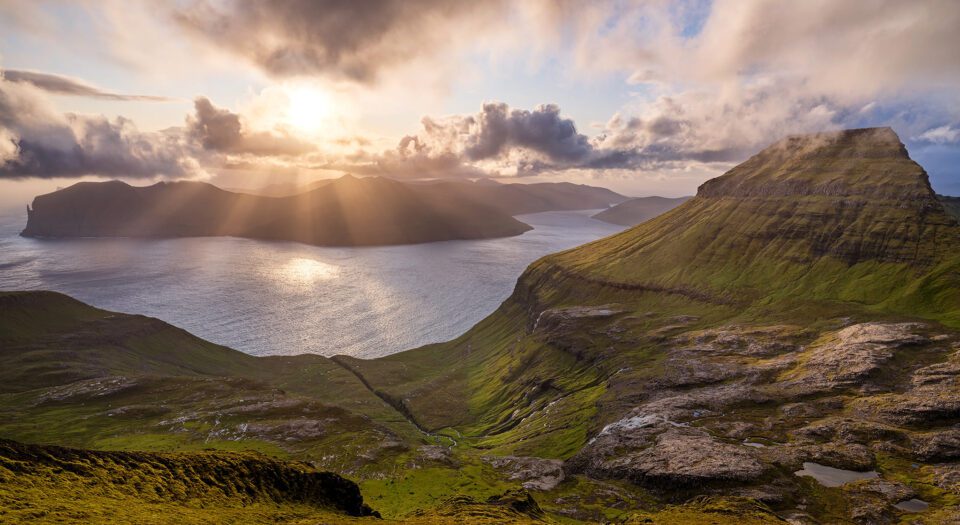
If you are into landscape photography, you might be wondering which camera on the market today is the best. With so many great cameras out there, it is hard to pick a winner. We decided to put together a detailed guide that shows the top cameras we recommend for your landscape photography needs. It is important to note that every single tool in the list below has been tested extensively by our team members, so we only provide recommendations based on our real-world experience.
While most digital cameras can work great for landscape photography, some are going to be better than others based on such metrics as total megapixels, dynamic range, in-camera features, and lens selection.
Landscape photographers often desire cameras that have as many megapixels as possible, as wide of dynamic range as possible, great battery life, in-camera features such as focus stacking, as well as the ability to withstand tough weather conditions. Often times, high ISO performance, high frame rates, deep buffers and fast autofocus systems are of little use for landscape photographers.
At the same time, other features such as in-body image stabilization (IBIS) can be quite helpful, especially when cameras are able to take advantage of sensor movements in order to track stars or to create high-resolution images using pixel shift technology. The ability to capture more dynamic range when shooting at higher ISOs, as well as the ability to focus easily in low-light conditions can also be vital for those who shoot the night sky. So if you are into astrophotography, you might need to evaluate such criteria separately when picking a particular camera or camera system.
Lastly, it is important to point out that a good camera for landscape photography requires a solid selection of high-performance lenses. A landscape photographer should be able to pick lenses based on their particular needs and their budget.
Although many photographers continue to rely on DSLR cameras that have a proven track record for landscape photography needs, some are shifting towards mirrorless systems. Both certainly have their advantages and disadvantages, and depending on your needs, you might want to evaluate each to see what works better for you.
Keep in mind that the sensor size is going to dictate the size of the overall system, its weight, as well as its overall cost. While medium format digital cameras offer the best overall image quality for landscape photographers, they are often large, heavy, and very expensive. For these and other reasons, most enthusiast and professional landscape photographers often choose full-frame DSLR and mirrorless cameras for their needs. Still, even full-frame cameras can end up being too heavy and expensive for many hobbyists, which leaves APS-C and smaller sensor systems as the best choices. In this article, we will first go over our top camera picks for landscape photography, then go over some of the budget options.
As of early 2021, there are many mirrorless cameras available from a variety of different manufacturers, including Panasonic, Olympus, Fujifilm, Hasselblad, Sony, Nikon, Canon, and Leica. Most of these cameras are capable of exceptional image quality, thanks to their high-resolution image sensors, wide dynamic range, and superb built-in features, making them all perfectly suitable for landscape photography. Let’s take a closer look at the six cameras we picked from different manufacturers. The below list is sorted by our order of preference, although every camera we present is more than capable of yielding exceptional images.
Best Cameras for Landscape Photography in 2020
Fujifilm GFX 100
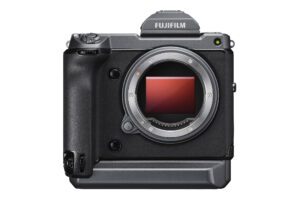 Our top pick is the amazing Fujifilm GFX 100, the only medium format camera that we decided to include in our top cameras for landscape photography. The Fujifilm GFX 100 is a superb choice for landscape photography for many reasons. First, it has an ultra-high resolution 102 MP sensor that produces images with stunning detail and excellent dynamic range. Second, it has a wide selection of exceptionally good lenses suitable for landscape photography, as well as all kinds of useful accessories and bellows from both Fujifilm and third-party manufacturers. Third, if you shoot hand-held, it comes with a very effective in-body image stabilization (IBIS). And lastly, Fujifilm provided plenty of in-camera tools in the GFX 100 specifically for landscape photography needs such as easy to use focus stacking, bracketing, focus peaking and on-screen histograms to assist photographers in yielding optimal exposure.
Our top pick is the amazing Fujifilm GFX 100, the only medium format camera that we decided to include in our top cameras for landscape photography. The Fujifilm GFX 100 is a superb choice for landscape photography for many reasons. First, it has an ultra-high resolution 102 MP sensor that produces images with stunning detail and excellent dynamic range. Second, it has a wide selection of exceptionally good lenses suitable for landscape photography, as well as all kinds of useful accessories and bellows from both Fujifilm and third-party manufacturers. Third, if you shoot hand-held, it comes with a very effective in-body image stabilization (IBIS). And lastly, Fujifilm provided plenty of in-camera tools in the GFX 100 specifically for landscape photography needs such as easy to use focus stacking, bracketing, focus peaking and on-screen histograms to assist photographers in yielding optimal exposure.
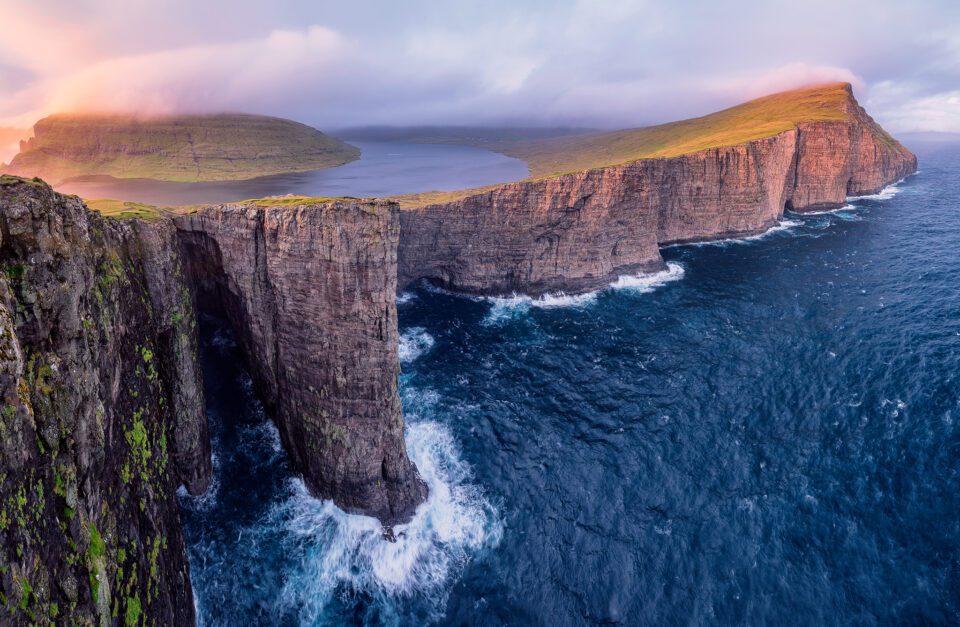
Its cheaper and lighter sibling, the GFX 50S is also an excellent camera if you are on a budget. While it might have less resolution, it is a solid tool with great ergonomics and build quality, capable of producing beautiful images.
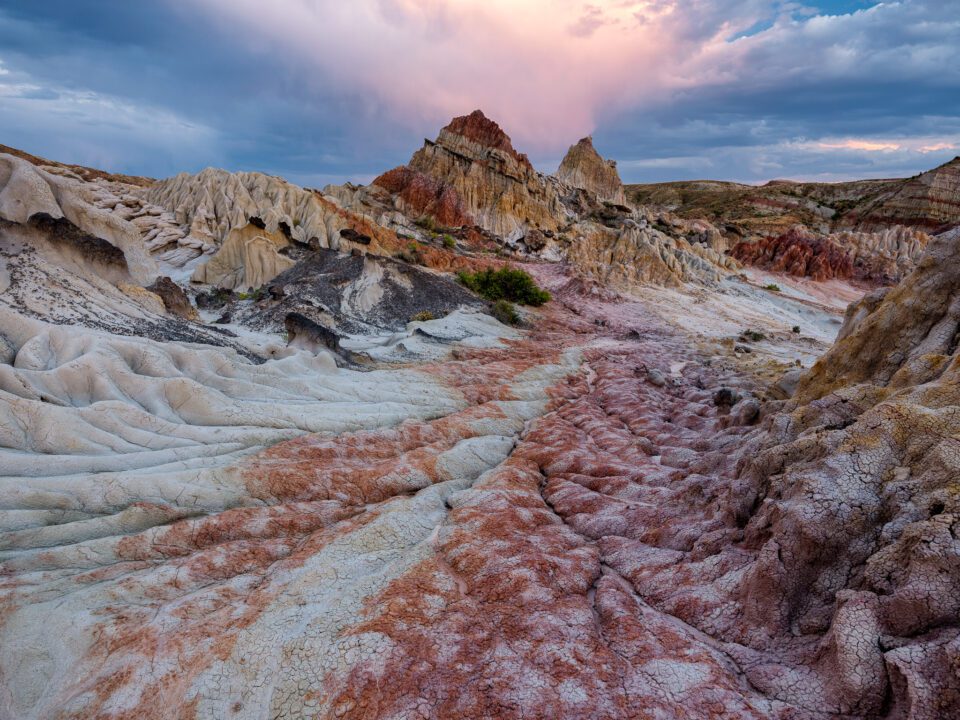
See our detailed review of the Fujifilm GFX 100 and GFX 50S for more information about this camera.
Nikon D850
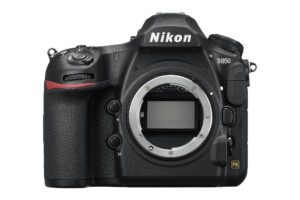 Although mirrorless cameras have been gaining quite a bit of traction lately for a number of reasons (see mirrorless vs DSLR), they still have some catching up to do with DSLRs when it comes to things like battery life and lens selection. For landscape photography needs, in particular, none of the camera manufacturers have made tilt/shift lenses yet, so one has to either use adapters with them or resort to bellows systems to be able to tilt the plane of focus. Nikon has a wide array of tilt/shift lenses available today and although they are quite expensive, they are among the many lenses available for the system, giving lots of different options for landscape photographers.
Although mirrorless cameras have been gaining quite a bit of traction lately for a number of reasons (see mirrorless vs DSLR), they still have some catching up to do with DSLRs when it comes to things like battery life and lens selection. For landscape photography needs, in particular, none of the camera manufacturers have made tilt/shift lenses yet, so one has to either use adapters with them or resort to bellows systems to be able to tilt the plane of focus. Nikon has a wide array of tilt/shift lenses available today and although they are quite expensive, they are among the many lenses available for the system, giving lots of different options for landscape photographers.
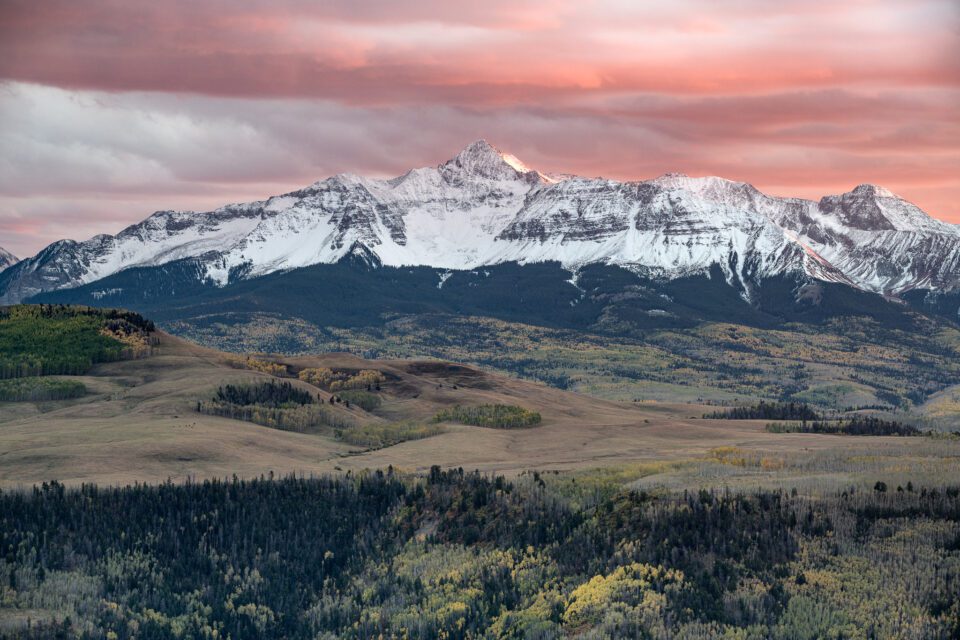
After testing out the Nikon D850, our team at PL agreed that it is the most complete DSLR on the market today. Thanks to its phenomenal 45 MP sensor with the capability to go down as low as ISO 64 and yield class-leading dynamic range performance, proven Nikon ergonomics and easy to use menu system, rich lens selection, excellent in-camera features, great weather sealing, and amazing battery life, the Nikon D850 is our top recommendation among all full-frame cameras on the market today for landscape photography needs.
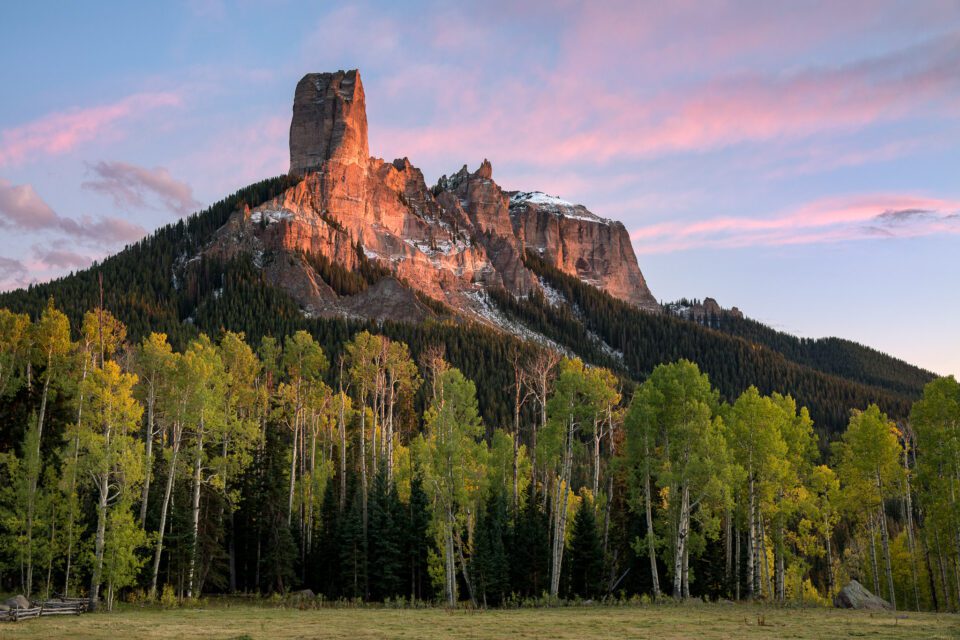
For more information, see our in-depth Nikon D850 review.
Another Nikon DSLR that we highly recommend is the older D810, which is another phenomenal camera for landscape photography needs. We did not include it in this list because of the D850 that replaced it. Personally, I decided to keep shooting with my Nikon D810 even after the D850 release, because it was such a phenomenal camera. I later sold it off in favor of the Nikon Z7, which I talk about below.
Sony A7R IV
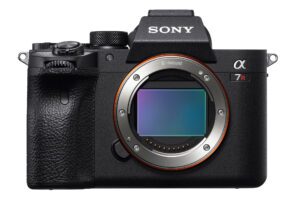 While the first few iterations of the Sony A7R suffered from a number of issues, Sony really came around and addressed most of the concerns with the release of the A7R IV. Thanks to its superb 61 MP BSI CMOS sensor, great battery life, and a rich lens selection, the Sony A7R IV is our top pick among full-frame mirrorless cameras on the market today. Sony has also done an amazing job with its lens releases, giving plenty of options from ultra-wide-angle to super-telephotos for landscape photographers. Sony’s willingness to open up the E mount and work with third-party lens manufacturers resulted in the addition of many lens options in a relatively short amount of time.
While the first few iterations of the Sony A7R suffered from a number of issues, Sony really came around and addressed most of the concerns with the release of the A7R IV. Thanks to its superb 61 MP BSI CMOS sensor, great battery life, and a rich lens selection, the Sony A7R IV is our top pick among full-frame mirrorless cameras on the market today. Sony has also done an amazing job with its lens releases, giving plenty of options from ultra-wide-angle to super-telephotos for landscape photographers. Sony’s willingness to open up the E mount and work with third-party lens manufacturers resulted in the addition of many lens options in a relatively short amount of time.
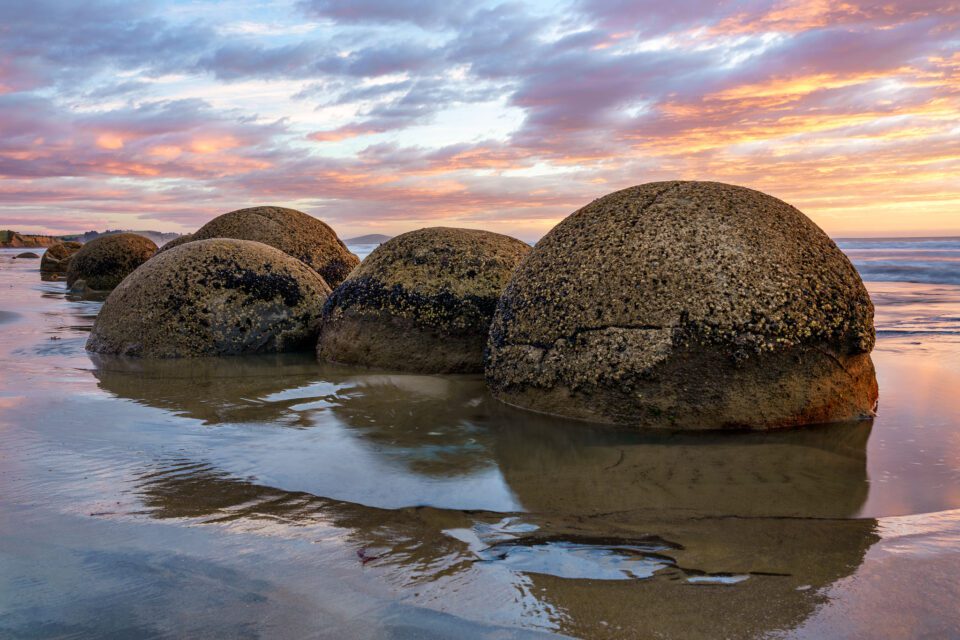
If you are on a tighter budget, its predecessor, the Sony A7R III is also an excellent choice that we can highly recommend for landscape photography needs.
Our biggest criticism of the Sony mirrorless cameras in general lies with the ergonomics and poorly organized menu system, which can make it painful for photographers to use these cameras in the field.

Canon EOS R5
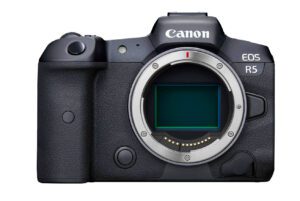 Seeing Canon go from one of the least desirable to one of the top mirrorless camera options for landscape photography has been pretty incredible. While the original EOS R was a very odd camera with some quirks and issues (as detailed in our Canon EOS R review), Canon decided to address all the issues and release the ultimate Canon mirrorless camera for landscape photography needs in the shape of the EOS R5. Featuring a 45 MP sensor with a high-resolution optical low-pass filter, the EOS R5 demonstrates excellent image quality and wide dynamic range, making it a very desirable camera for landscape photography needs.
Seeing Canon go from one of the least desirable to one of the top mirrorless camera options for landscape photography has been pretty incredible. While the original EOS R was a very odd camera with some quirks and issues (as detailed in our Canon EOS R review), Canon decided to address all the issues and release the ultimate Canon mirrorless camera for landscape photography needs in the shape of the EOS R5. Featuring a 45 MP sensor with a high-resolution optical low-pass filter, the EOS R5 demonstrates excellent image quality and wide dynamic range, making it a very desirable camera for landscape photography needs.
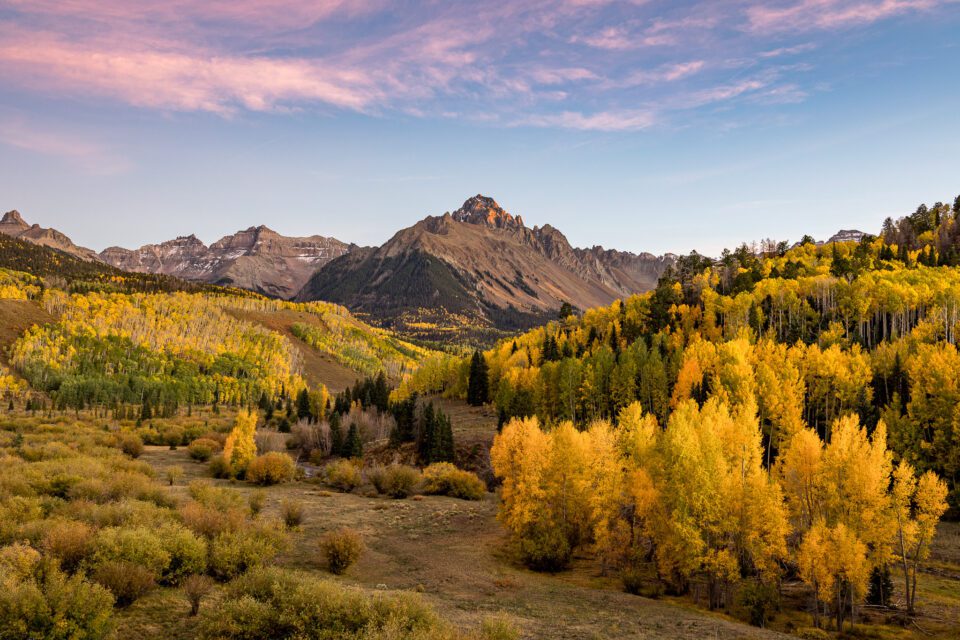
In addition to excellent ergonomics and easy to understand menu system, the Canon EOS R5 has a tough magnesium alloy construction, superb weather sealing, and dual memory card slots (1x CFexpress and 1x SD UHS-II). Despite its high-resolution sensor, the EOS R5 is able to shoot up to 12 FPS using its mechanical shutter and up to 20 FPS when using the electronic shutter. Similar to Nikon Z, the Canon RF lens options have grown tremendously since the launch of the original RF mount (although Canon focused more on professional-grade zoom and prime lenses). And for those who like to shoot video, the EOS R5 is the only consumer-grade digital camera on the market today that is capable of shooting 8K videos.
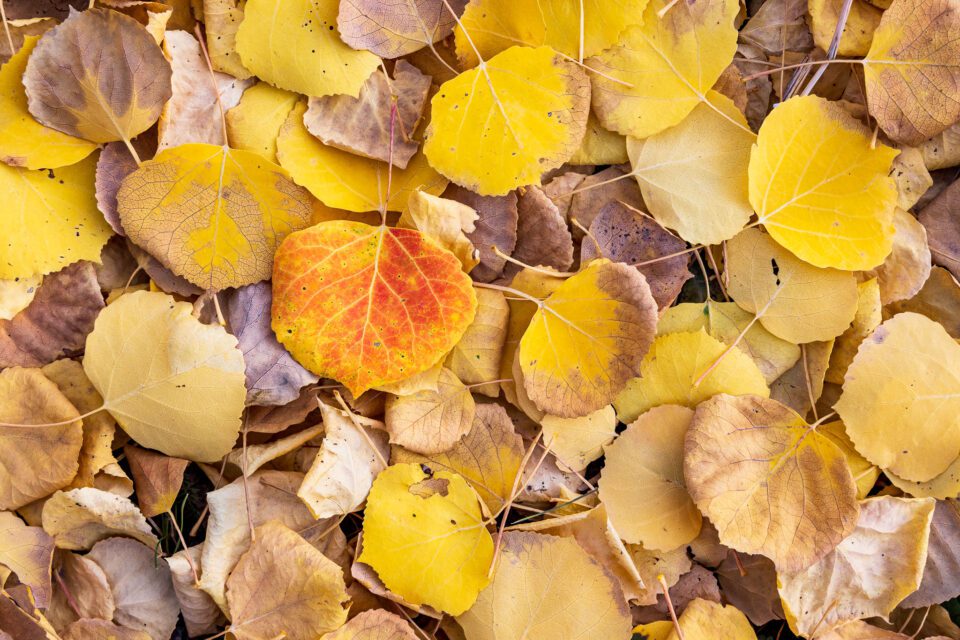
For those on a budget, Canon’s EOS R6 is another great mirrorless option for landscape photography. Although with its 20.1 MP sensor it has much less resolution compared to the EOS R5, many of its features are very similar to those of the R5. As detailed in my Canon EOS R5 vs R6 article, it has the same ergonomics/build quality, 5-axis IBIS, autofocus system, and continuous shooting speed. All this makes the EOS R6 a great general-purpose camera. So unless you are planning to make very large prints, the EOS R6 is going to be a great alternative to the EOS R5, and it will save you quite a bit of money.
Nikon Z7 / Z7 II
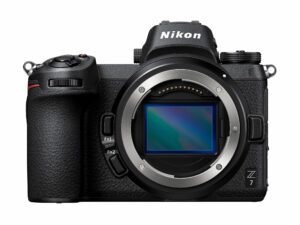 The Nikon Z7 and Z7 II are strong contenders in our list of best cameras for landscape photography needs thanks to their excellent overall performance. The Z7 and Z7 II mirror the Nikon D850 sensor and its ISO / dynamic range capabilities, come with very effective in-body image stabilization (IBIS), and pack everything (and more) the D850 has to offer in terms of in-camera features designed for landscape photography, all in a smaller and lighter package. While lens selection remains a challenge, Nikon was able to roll out its holy trinity in the form of the Nikon Z 14-24mm f/2.8 S, Z 24-70mm f/2.8 S, and Z 70-200mm f/2.8 S in a relatively short period of time. And for those who enjoy doing astrophotography, the new Z 20mm f/1.8 S is also an excellent budget-friendly choice. In short, Nikon’s new Z lens line-up is simply amazing when compared to its F-mount counterparts.
The Nikon Z7 and Z7 II are strong contenders in our list of best cameras for landscape photography needs thanks to their excellent overall performance. The Z7 and Z7 II mirror the Nikon D850 sensor and its ISO / dynamic range capabilities, come with very effective in-body image stabilization (IBIS), and pack everything (and more) the D850 has to offer in terms of in-camera features designed for landscape photography, all in a smaller and lighter package. While lens selection remains a challenge, Nikon was able to roll out its holy trinity in the form of the Nikon Z 14-24mm f/2.8 S, Z 24-70mm f/2.8 S, and Z 70-200mm f/2.8 S in a relatively short period of time. And for those who enjoy doing astrophotography, the new Z 20mm f/1.8 S is also an excellent budget-friendly choice. In short, Nikon’s new Z lens line-up is simply amazing when compared to its F-mount counterparts.
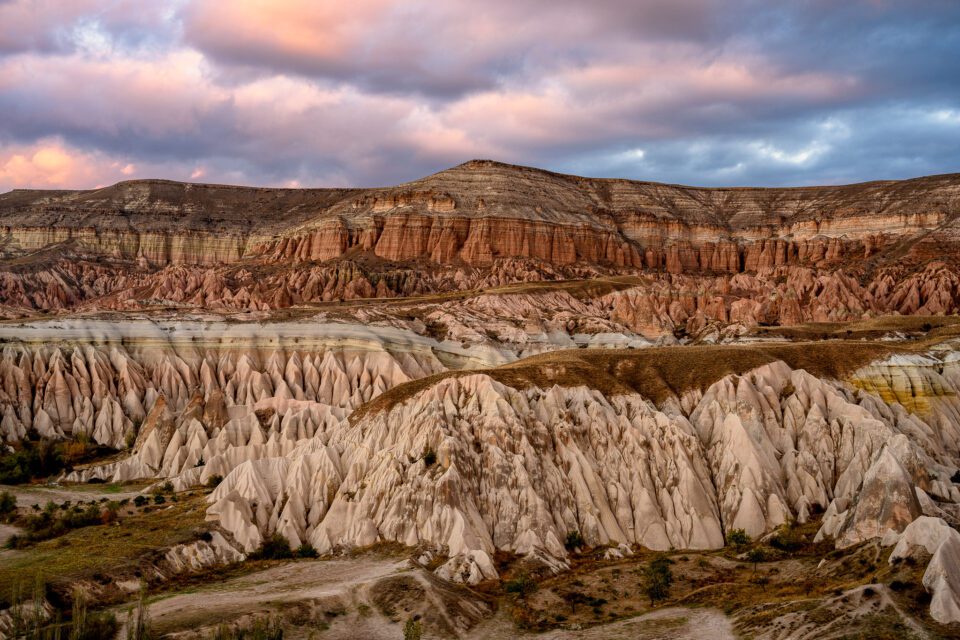
Although the original Z7 featured a single XQD / CFexpress memory card slot, Nikon added a UHS-II compatible SD memory card slot to the Z7 II. As explained in my Nikon Z7 vs Z7 II article, there were a few other important refinements delivered with the Z7 II, including dual EXPEED 6 processors, a much larger memory buffer and the ability to use a real battery grip with controls. Still, we do want Nikon to pay more attention to firmware updates, so we created our detailed wishlist of camera features we would like to see on Nikon Z-series cameras in the future. Even though Nikon has been able to address some of them, we hope to see more continuous improvements and innovations in these cameras.
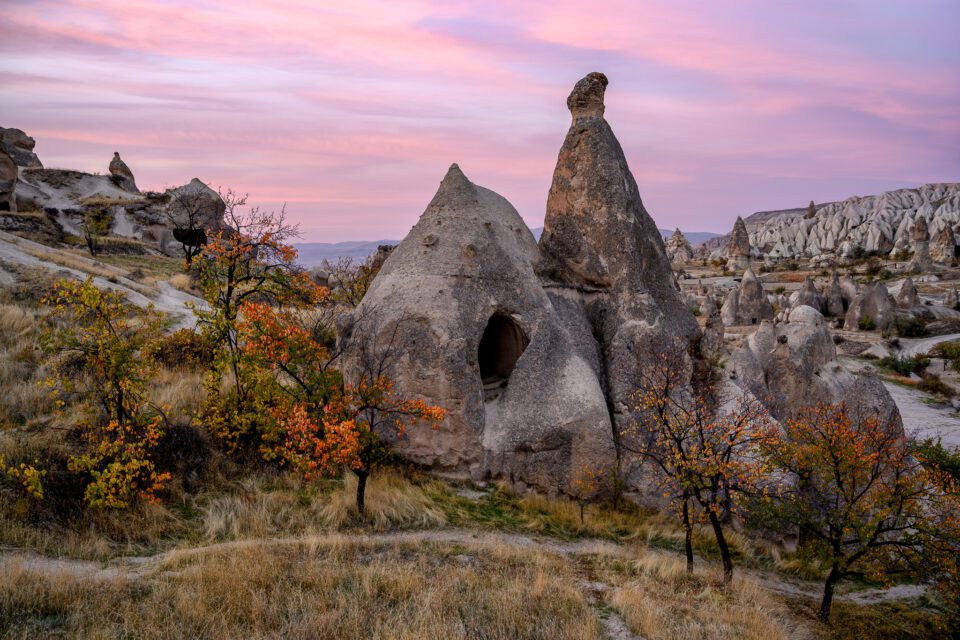
For more information about the Nikon Z7, see our Nikon Z7 review (the Z7 II review will be published as soon as we have access to the camera). For more information about Nikon Z lenses, please see Everything You Need to Know About Nikon Z Lenses.
For those on a tighter budget, the Nikon Z6 and Z6 II are also favorable choices for landscape photography. While these cameras have 24 MP sensors with low-pass filters, as long as you are not planning to make huge prints, they are still excellent cameras for most photographers out there. You can find out more about the Z6 in our Nikon Z6 review, while a comparison between this camera and its second-generation version can be found in our Z6 vs Z6 II article.
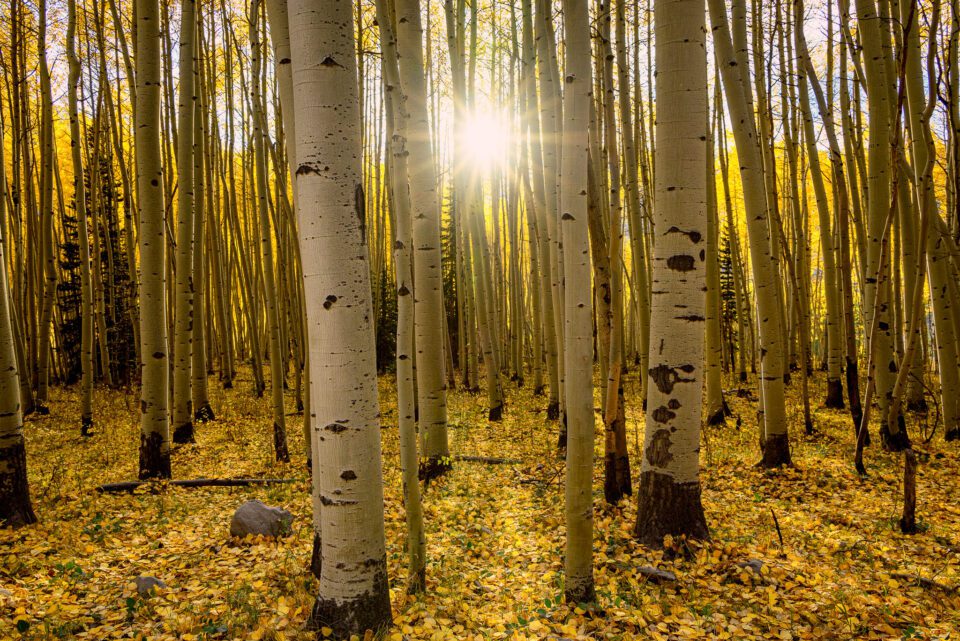
Another option that is even cheaper than the Z6 II is the full-frame Nikon Z5 (see our Nikon Z5 review). Although it has a slightly older 24 MP CMOS sensor, its dynamic range performance, as well as all the in-camera features are still excellent for landscape photography needs.
Panasonic S1R
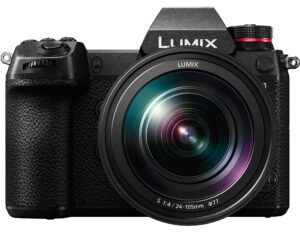 Panasonic’s first high-resolution full-frame mirrorless camera is full of great features, making it a very strong contender for landscape photography needs. Sporting an excellent 47.3 MP image sensor, in-body image stabilization, 9 FPS continuous shooting speed, dual memory cards (1x CFexpress / XQD and 1x SD UHS-II), pixel-shift technology and excellent dynamic range, the Panasonic S1R is one of the most feature-rich mirrorless cameras on the market today. The high-resolution pixel-shift mode is capable of delivering images up to 186.9 MP, providing amazing level of detail when shooting landscapes (although this feature does have its limitations, as detailed in our Panasonic S1R review).
Panasonic’s first high-resolution full-frame mirrorless camera is full of great features, making it a very strong contender for landscape photography needs. Sporting an excellent 47.3 MP image sensor, in-body image stabilization, 9 FPS continuous shooting speed, dual memory cards (1x CFexpress / XQD and 1x SD UHS-II), pixel-shift technology and excellent dynamic range, the Panasonic S1R is one of the most feature-rich mirrorless cameras on the market today. The high-resolution pixel-shift mode is capable of delivering images up to 186.9 MP, providing amazing level of detail when shooting landscapes (although this feature does have its limitations, as detailed in our Panasonic S1R review).
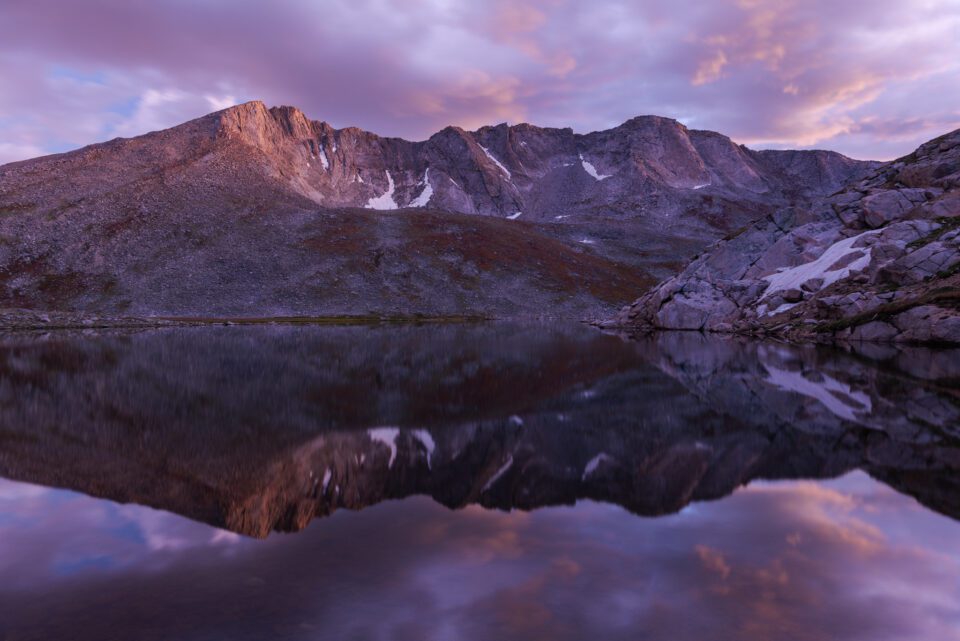
Copyright Spencer Cox
Another strength of the Panasonic S1R is lens selection. With Leica, Panasonic, and Sigma being part of the “L-mount alliance”, there are plenty of great lens options available for the L-mount – from ultra-premium Leica glass to budget-friendly options from Sigma. Panasonic’s own zoom and prime lenses are also excellent and highly recommended for landscape photography needs.
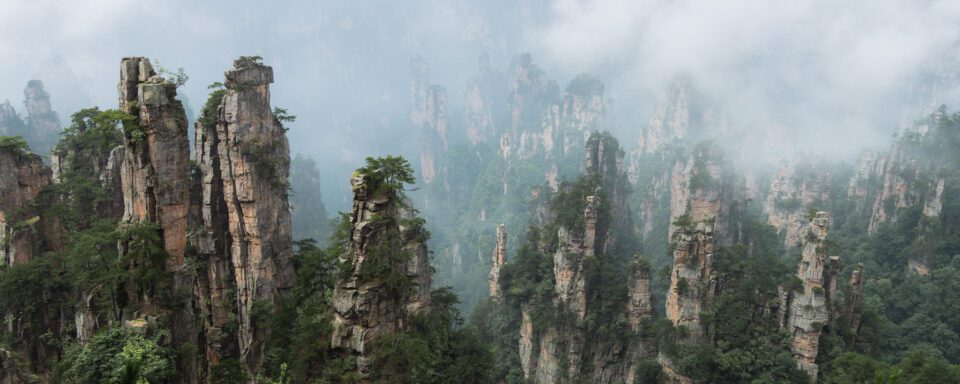
Copyright Spencer Cox
The biggest drawback of the S1R is its size, weight, and price. It is as big as a high-end DSLR camera, weighs over a kilo, and retails for $3700, making it the third most expensive camera on this list after the Fuji GFX100 and the Canon EOS R5.
Pentax K-1 / K-1 II
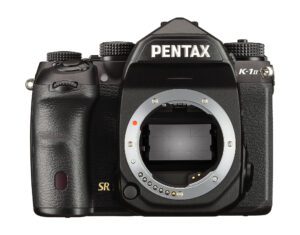 Another well-rounded DSLR in our list is the Pentax K-1, which rightfully earns its spot, thanks to its 36 MP CMOS sensor with 5-axis IBIS that is capable of taking high-resolution images with pixel-shift technology. With pixel-shift, the Pentax K-1 is able to yield highly detailed, noise-free images up to 42 MP. While 42 MP might not sound like a lot when we have 45 and 50 MP cameras on this list, it actually yields more pixel-level details compared to other cameras. In addition, the ability to move the image sensor also allows the Pentax K-1 to capture moving stars with its “AstroTracer” feature, making the K-1 arguably the best camera on the list for astrophotography needs. The Pentax K-1 comes with a great set of in-camera features for landscape photography, including built-in GPS and Compass which automatically get written into every captured image, which can be helpful for tracking the movement and position of the camera.
Another well-rounded DSLR in our list is the Pentax K-1, which rightfully earns its spot, thanks to its 36 MP CMOS sensor with 5-axis IBIS that is capable of taking high-resolution images with pixel-shift technology. With pixel-shift, the Pentax K-1 is able to yield highly detailed, noise-free images up to 42 MP. While 42 MP might not sound like a lot when we have 45 and 50 MP cameras on this list, it actually yields more pixel-level details compared to other cameras. In addition, the ability to move the image sensor also allows the Pentax K-1 to capture moving stars with its “AstroTracer” feature, making the K-1 arguably the best camera on the list for astrophotography needs. The Pentax K-1 comes with a great set of in-camera features for landscape photography, including built-in GPS and Compass which automatically get written into every captured image, which can be helpful for tracking the movement and position of the camera.
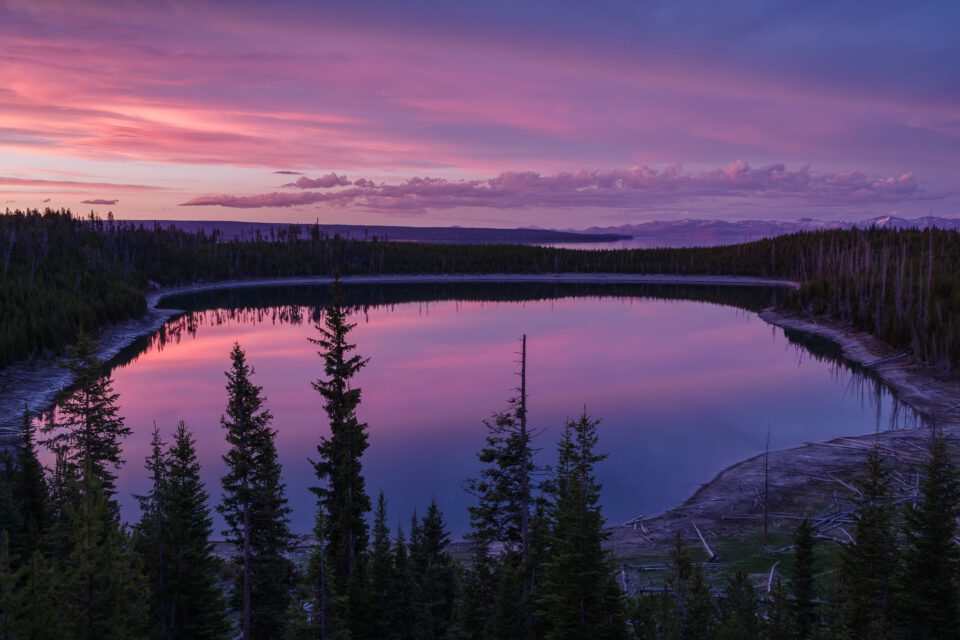
Pentax replaced the original K-1 with the K-1 II in early 2018, which provides even more features such as hand-held pixel-shift mode, superior AF tracking algorithm, and other improvements to its pixel shift feature. All this makes it worthwhile to upgrade to the latest version.
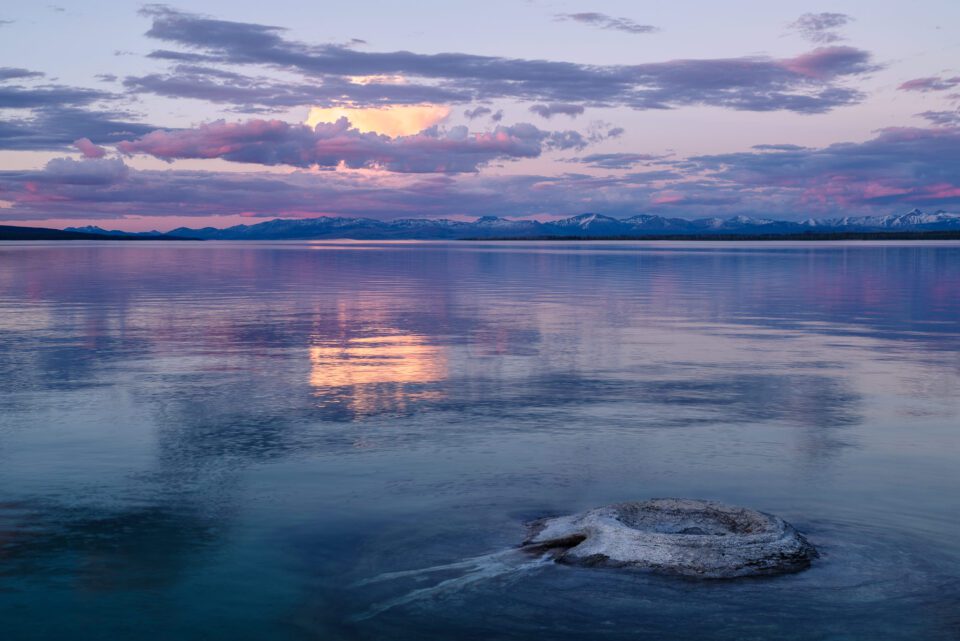
Best Budget Camera for Landscape Photography
If you are not ready to spend thousands of dollars on a medium format or a full-frame system, you might want to consider a few budget-friendly options with smaller sensors that offer a bit less resolution. Many photographers who do landscape photography as a hobby might want to consider these cameras, which we have had a good experience with:
- Fujifilm X-T3 / X-T4 – Our top picks among APS-C cameras are the X-T3 and X-T4, both of which offer great image quality with a relatively small footprint.
- Nikon D7500 – Nikon’s enthusiast-grade DSLR with an APS-C sensor offers a wide dynamic range and a solid selection of Nikkor lenses
- Nikon D5600 – Another great choice for those on a lower budget is the Nikon D5600, which is capable of amazing image quality, even when coupled with kit lenses
- Canon EOS 80D – A strong 24 MP camera from Canon that can be coupled with an extensive list of Canon EF and EF-S lenses to deliver stunning results
- Canon EOS T7i – Sporting a similar 24 MP sensor as the 80D, the T7i is another great camera from Canon
- Sony A6000-series – Sony’s A6000-series cameras are all very good mirrorless options for landscape photography needs
What camera do you shoot landscapes with and why? Please let us know in the comments section below!